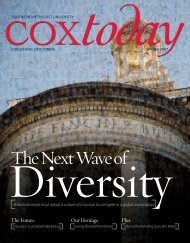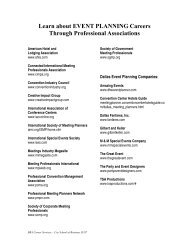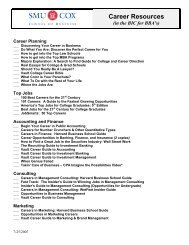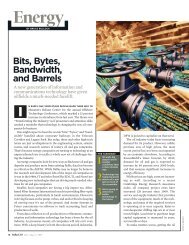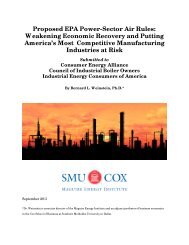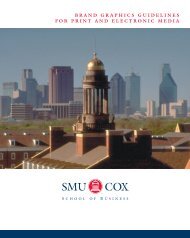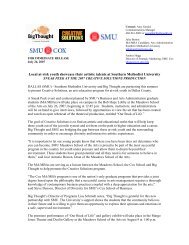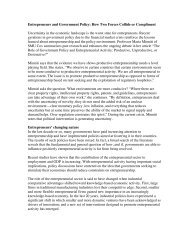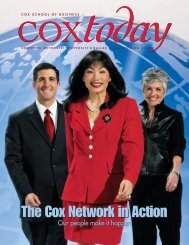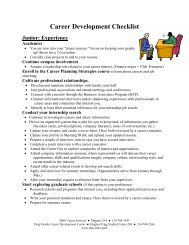Lessons from the Texas Homeowners Insurance Crisis Bob Puelz ...
Lessons from the Texas Homeowners Insurance Crisis Bob Puelz ...
Lessons from the Texas Homeowners Insurance Crisis Bob Puelz ...
You also want an ePaper? Increase the reach of your titles
YUMPU automatically turns print PDFs into web optimized ePapers that Google loves.
with <strong>the</strong> NAIC, and were sourced for this study <strong>from</strong> state-assembled datasets. Statutory page<br />
14 of <strong>the</strong> annual report is a premium and expense exhibit that focuses on premiums, losses and<br />
expenses attributable by line of insurance and by state. The analysis considers all insurance<br />
entities that sold homeowners insurance in <strong>Texas</strong> <strong>from</strong> 1996 through 2001. It includes insurers<br />
that wrote policies in both price-unregulated companies and price-regulated companies. Thus,<br />
not only is it of interest to examine whe<strong>the</strong>r insurers have experienced rising costs, but also were<br />
<strong>the</strong> non-regulated companies, where prices are unconstrained by regulatory mandate, more<br />
profitable for insurers?<br />
Figure 1 and Table 3 depict loss ratio experience for homeowners contracts in <strong>the</strong><br />
California, Illinois and <strong>Texas</strong> markets. While <strong>the</strong> risk attributes of an insured home in one state<br />
are difficult to contrast with an insured home in ano<strong>the</strong>r state, <strong>the</strong> proportion of losses to<br />
premiums is comparable, particularly with regard to managerial sensitivity about <strong>the</strong> relative<br />
profitability of <strong>the</strong>se markets. From 1996 through 2001, <strong>the</strong> California experience in <strong>the</strong><br />
homeowners market was relatively stable, with a loss ratio fluctuating <strong>from</strong> a low of 0.48 in 1997<br />
to a high of 0.64 in 2001. The Illinois experience was somewhat “u-shaped” with a relatively<br />
high loss ratio in 1996 (0.93), stability in 1997 through 1999, followed by a upward movement to<br />
a high of 1.08 in 2001. By contrast, <strong>the</strong> <strong>Texas</strong> experience over <strong>the</strong>se years reveals a trend similar<br />
to Illinois but different <strong>from</strong> California, highlighted by <strong>the</strong> years where insurers had a loss ratio<br />
of 0.84 in 2000 and 1.18 in 2001; a losing business segment for <strong>the</strong> industry as a whole even<br />
before taking company expenses into account. 9<br />
9 Statistical tests for differences between California and <strong>Texas</strong> loss ratios were significant at only <strong>the</strong> 0.08<br />
level; however, <strong>the</strong> differences between Illinois and California, and Illinois and <strong>the</strong> <strong>Texas</strong> entities were statistically<br />
significant at <strong>the</strong> 0.01 level. The near-term trend in <strong>the</strong>se results appears to be consistent with <strong>the</strong> widespread<br />
concern over profitability by insurance executives, which is highlighted in <strong>the</strong> October 2002 presentation, “What’s<br />
Keeping CEOs Awake at Night?” by Robert P. Hartwig, http://www.iii.org/media/industry/outlooks/unitedstates/.<br />
7





